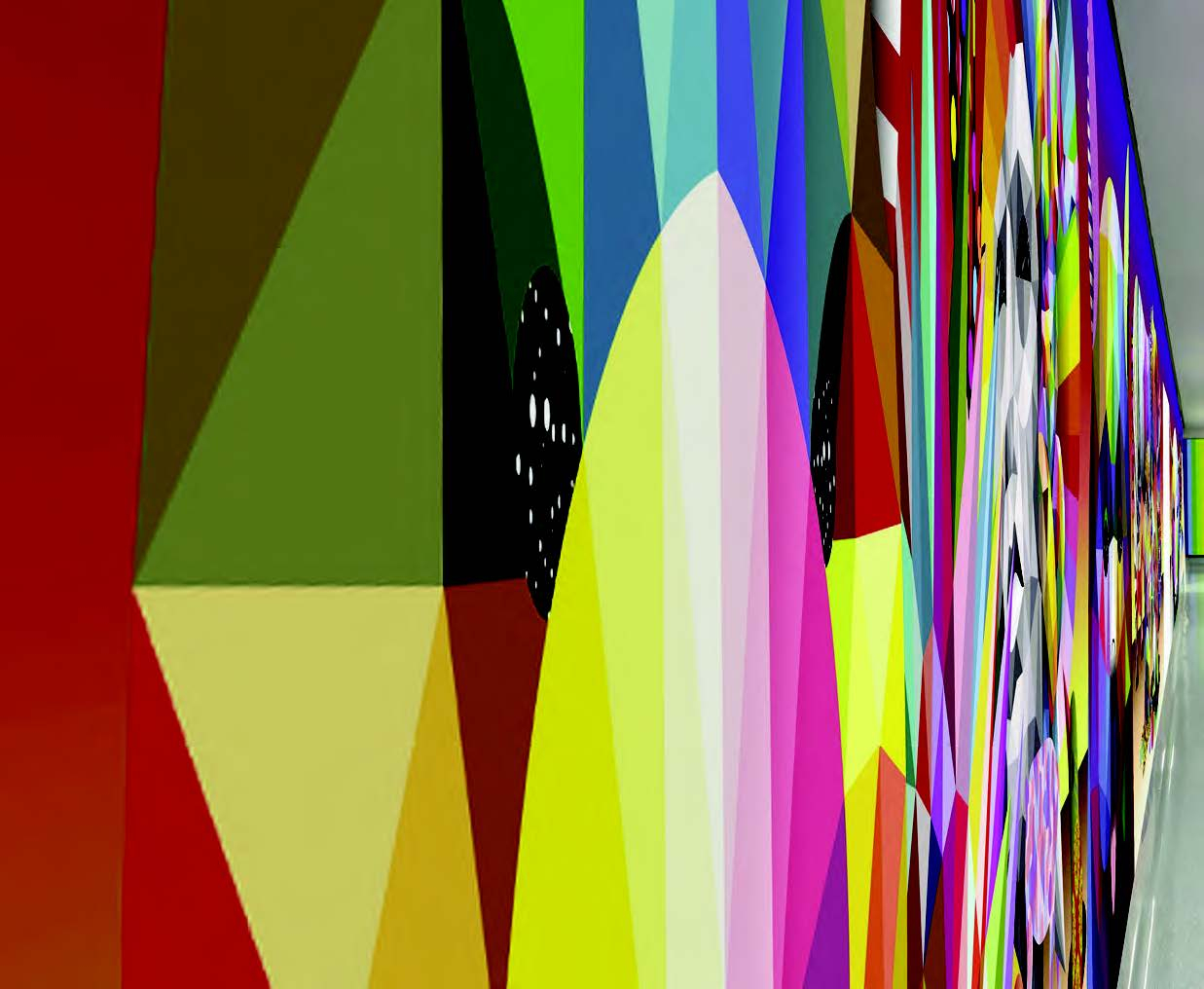
Paediatric design: the impact of art and digital technology on children and young people
It is being increasingly recognised that art helps to make paediatric units less institutional and, in many cases, can help take patients’ minds off their condition and treatment.
San Carlos Hospital
Art is central to the newly refurbished paediatric unit at the San Carlos Hospital in Madrid. Wall panels and furniture are adorned with the multi-coloured geometric shapes that have become the trademark of local artist, Okuda San Miguel.
Dr Esther Aleo, director of the Child and Adolescent Institute of the Hospital Clinic of Madrid, said: “The atmosphere that surrounds the admission of a child is very important. Details such as the lighting and comfort of the space where they will spend hours waiting are fundamental.
“Art allows us to seek refuge and find an escape, strength, and happiness, which is what the children, their families and medical staff can perceive in Okuda’s work.”
The art is printed onto Younique decorative wall panels from Formica Group.
King’s College Hospital
In the UK, Art in Site recently worked with illustrator, Richard Hogg, on the new children’s emergency unit at King’s College Hospital, London.
Hogg illustrated a series of animals that play across ceilings and walls in the facility.
Peter Shenai, Art in Site’s creative strategist, said: “Art can reassure children by providing comforting, child-friendly stimulation that makes them feel they belong here in the child-positive environment.
“The environment acts as an extension to the doctor’s child-friendly bedside manner, giving an impression to children, and their parents, that their needs will be understood, respected and well catered for".
Public health
Shenai explains, “Young children coming into hospital are at a formative stage of their lives. If the environment is scary and adult-focused, this can lead them to develop phobias about the hospital, which spells trouble for the staff who have to treat them in the future.”
Catering for children of all ages with varying needs
A one-size-fits-all solution isn’t always the best answer.
Shenai, who also worked on an interactive art app for children visiting St Thomas’ paediatric emergency department in London, said: “It comes down to understanding the user group and hearing from staff and patients themselves about their emotional and practical needs.
“Some staff feel that art’s role is to distract or stimulate children during treatment. Alongside this, we may hear from children and parents that they want something ‘friendly’ to accompany them across their journey.
“The tricky part comes in trying to provide an artistic strategy that keeps all of this in mind, while not losing the creative spark that keeps artwork fresh and interesting.”
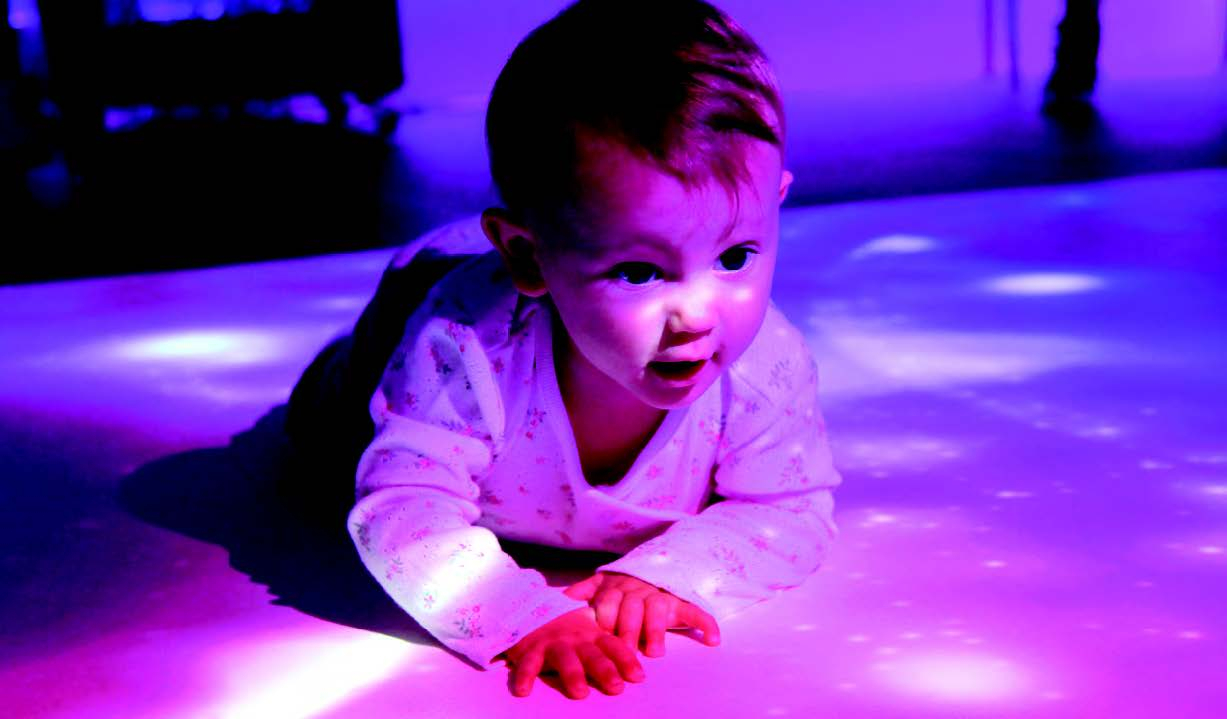
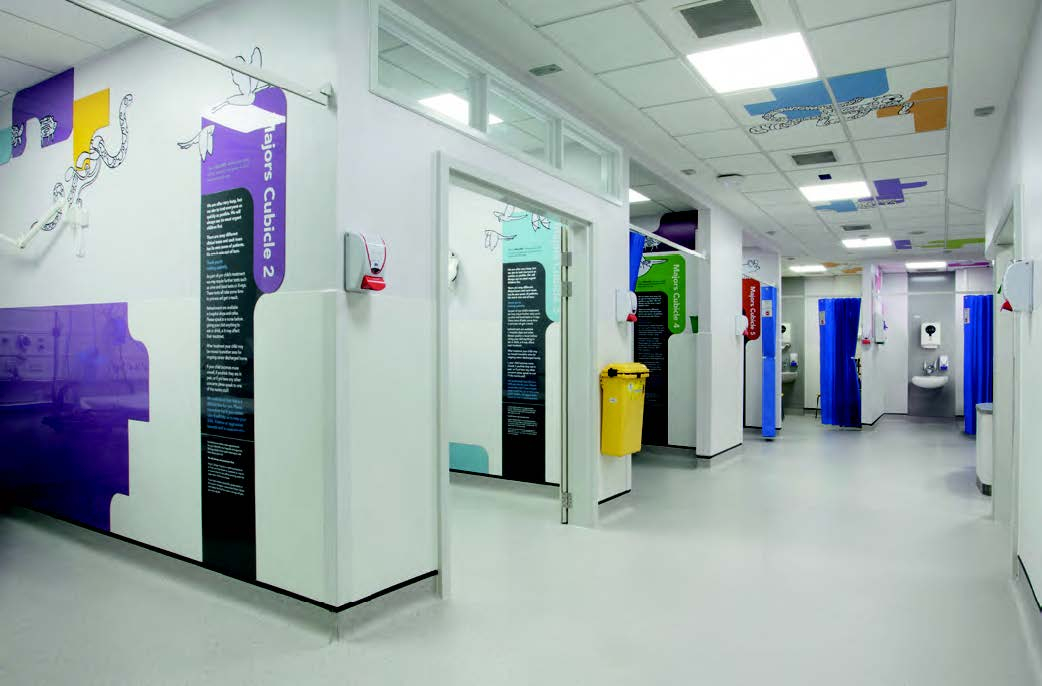
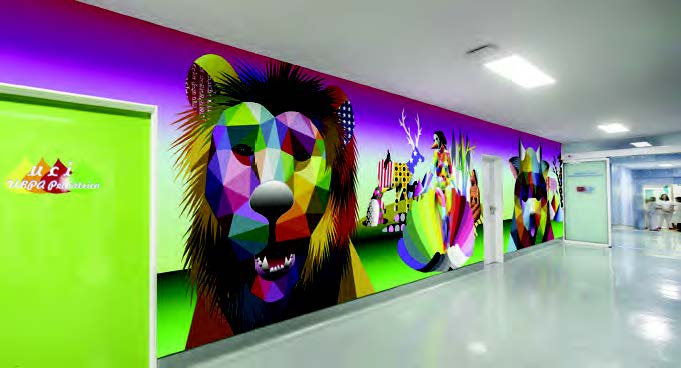
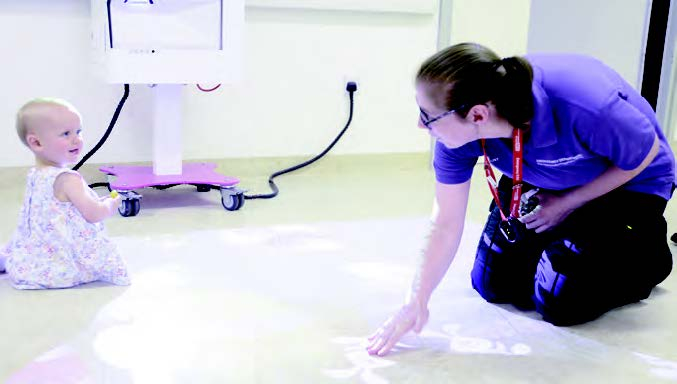
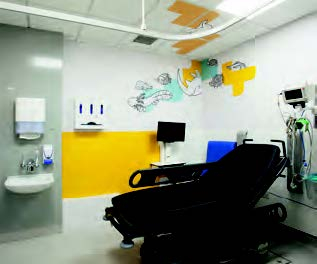
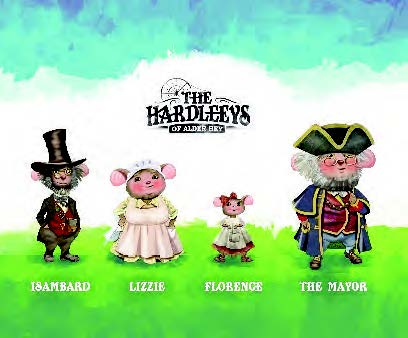
The age of technology
Integrating art and technology is helping to provide that spark.
Alder Hey Children’s Health Park
When the new £250m Alder Hey Children’s Health Park opened in 2016 it featured a bespoke patient entertainment system complete with its own family of animated characters, The Hardleeys of Alder Hey.
The design, developed by Jungle Creative, is as follows:
The company’s creative director, Allan Johnston says, “In radiology, we’ve had great feedback as the digital films help to distract and relax patients and their parents, leaving the medical staff to do their jobs.
“Play therapists also use them to encourage children to mobilise and interact with one another.”
Jungle Creative managing director, Graham Ebbs, said: “Rather than just putting TVs and paintings on the walls, the project team wanted to see how far they could go digitally and how they could make things more interactive.
“Children are now so technologically literate that you need to think outside the box.
“You don’t want children just sitting in bed playing on their own on their iPads, and you can’t compete with the multi-million-pound games and apps that are out there.
“The Hardleeys have enabled us to offer great solutions to both of these problems.”
A source of information
Sharing information is another reason why art, and in particular digital art, is increasingly being incorporated into paediatric design.
“Being well informed is key to a patient’s wellbeing, particularly in the emergency department” said Shenai.
“No-one wants to wait around not knowing what is about to happen. Therefore, all of the emergency projects we’ve worked on blend art and information together”.
Shenai also points out that, “information is often so dry that people ignore it or miss it. Our job is to bring some life, emotion, and vitality to the wayfinding and information – making it enticing to read and easier to understand”.
This approach can also incorporate sensory tools to assist children with a range of disabilities.
Floor projection systems
Having partnered with Loxit; Sensory Guru has seen its Magic Carpet interactive projection system installed into hospitals and special needs facilities across the country. It is currently the only NHS-approved interactive floor projection system.
A motion-capture camera to tracks users as they move over the projected apps. This movement data informs the software of the speed, direction and location of the movement. This data is then converted into dynamic audio-visual feedback, which users experience as real-time cause and effect triggered by their movements.
The Princess Royal University District General Hospital
This innovation is being used in the hospital’s paediatric phlebotomy unit. The hospital forms part of
King’s College Hospital NHS Foundation Trust.
Sian Spencer-Little, a specialised play practitioner at the trust, said: “We were looking for something that was quite distinctive in its capabilities to help us within a clinical setting and were keen to have a product that is tailored to children and young people of all ages and stages of development.
“It’s about choosing a product that is really interactive and could be led by children and young people so they can have some control over their environment.
The impact
“It can transform the hospital environment into a magical place that feels completely different to a traditional hospital setting. This helps to create a sense of calmness for children and young people in what can be a stressful experience.
“Lots of children now even get excited about the thought of coming to hospital. It is no longer a scary experience that they want to try and avoid.”
Limited budgets
Shenai warns: “Many new builds allocate an arts budget, usually about 1% of the total build cost. Specialist art co-coordinators are becoming more common to healthcare, but there is this tendency for questions of art and the environment to get pushed to the bottom of the priority list, especially as trusts across the country feel the sting of austerity.
“This attitude is actually self-defeating, though, as data on our work has shown that investing in arts actually gives services a huge return for their money – increasing patient wellbeing, staff retention, and improving service efficiency – all of which are needed to see any service through difficult times.”